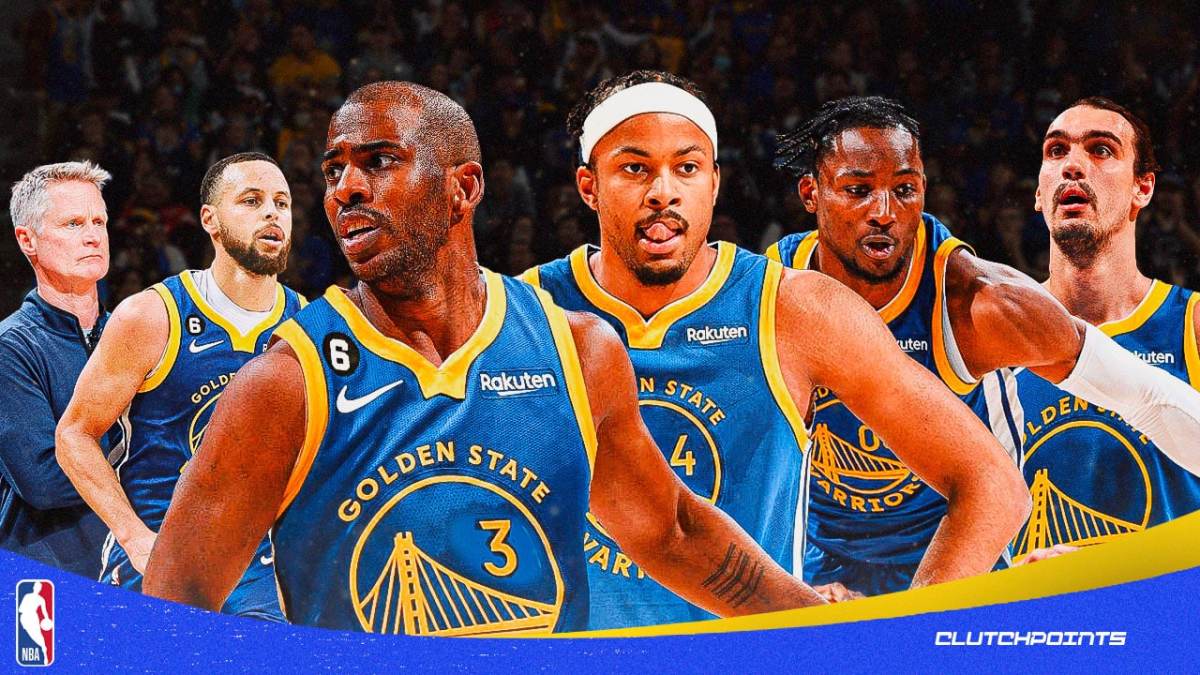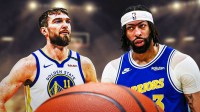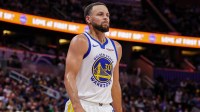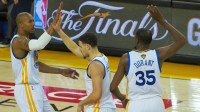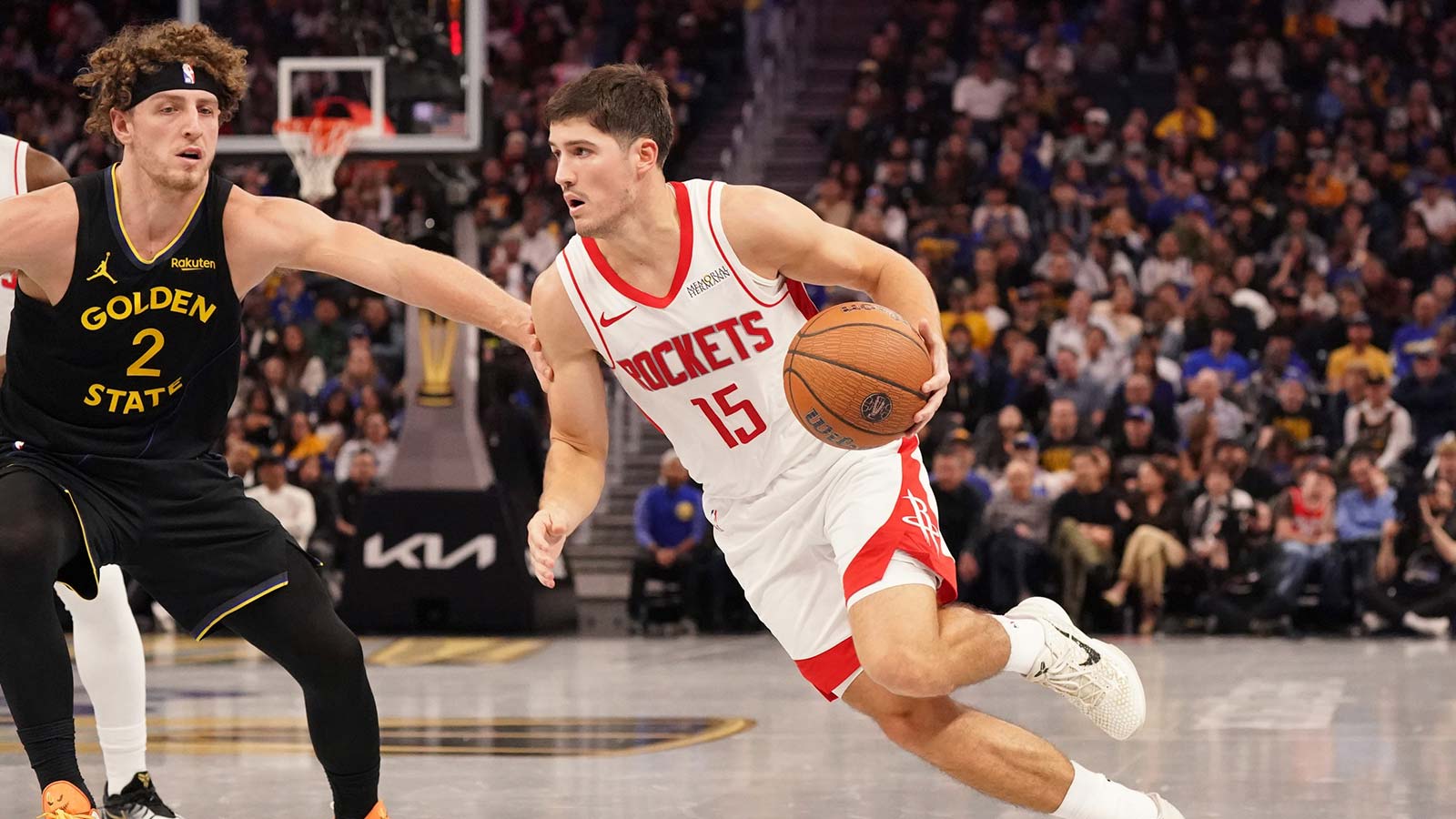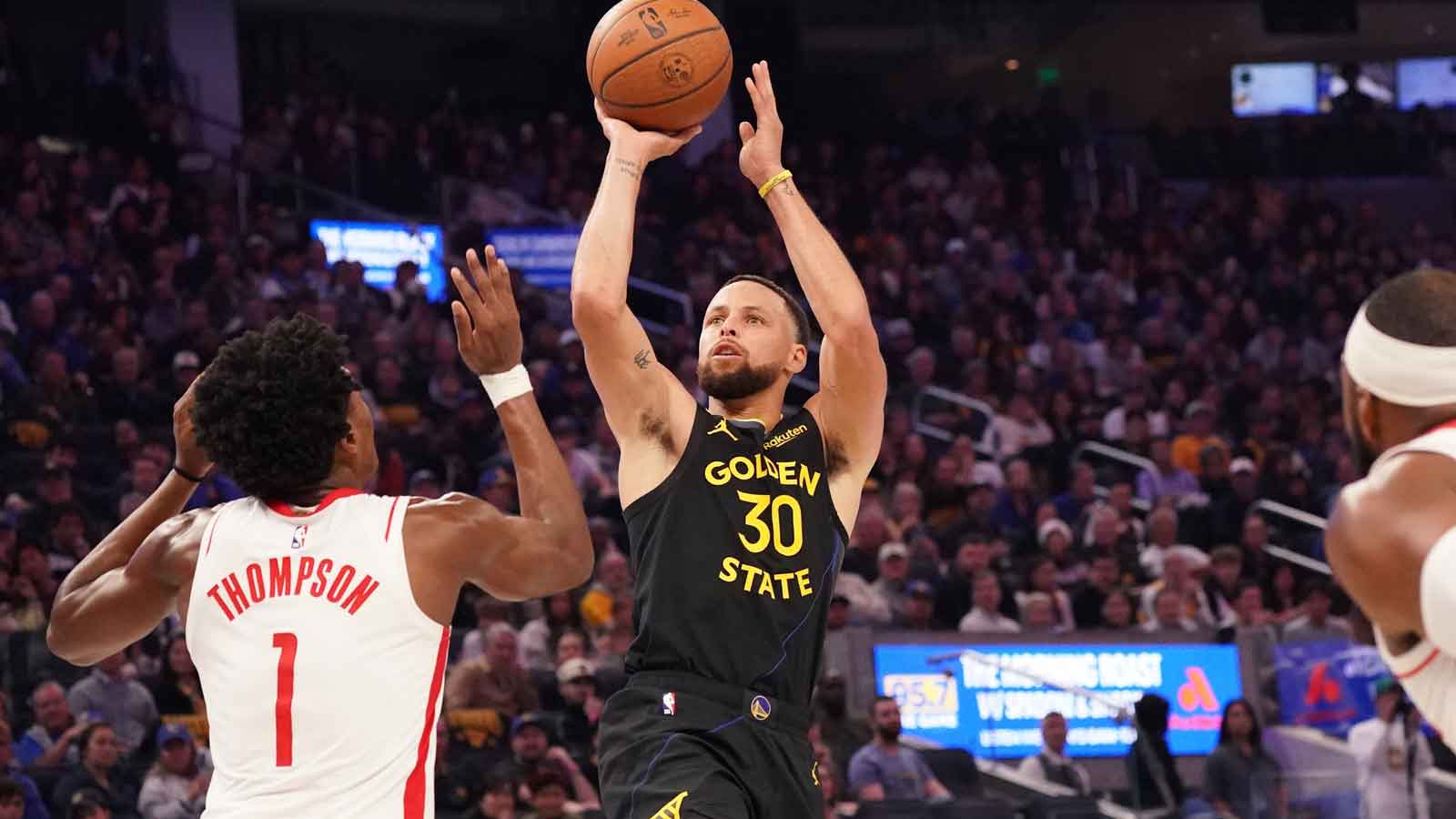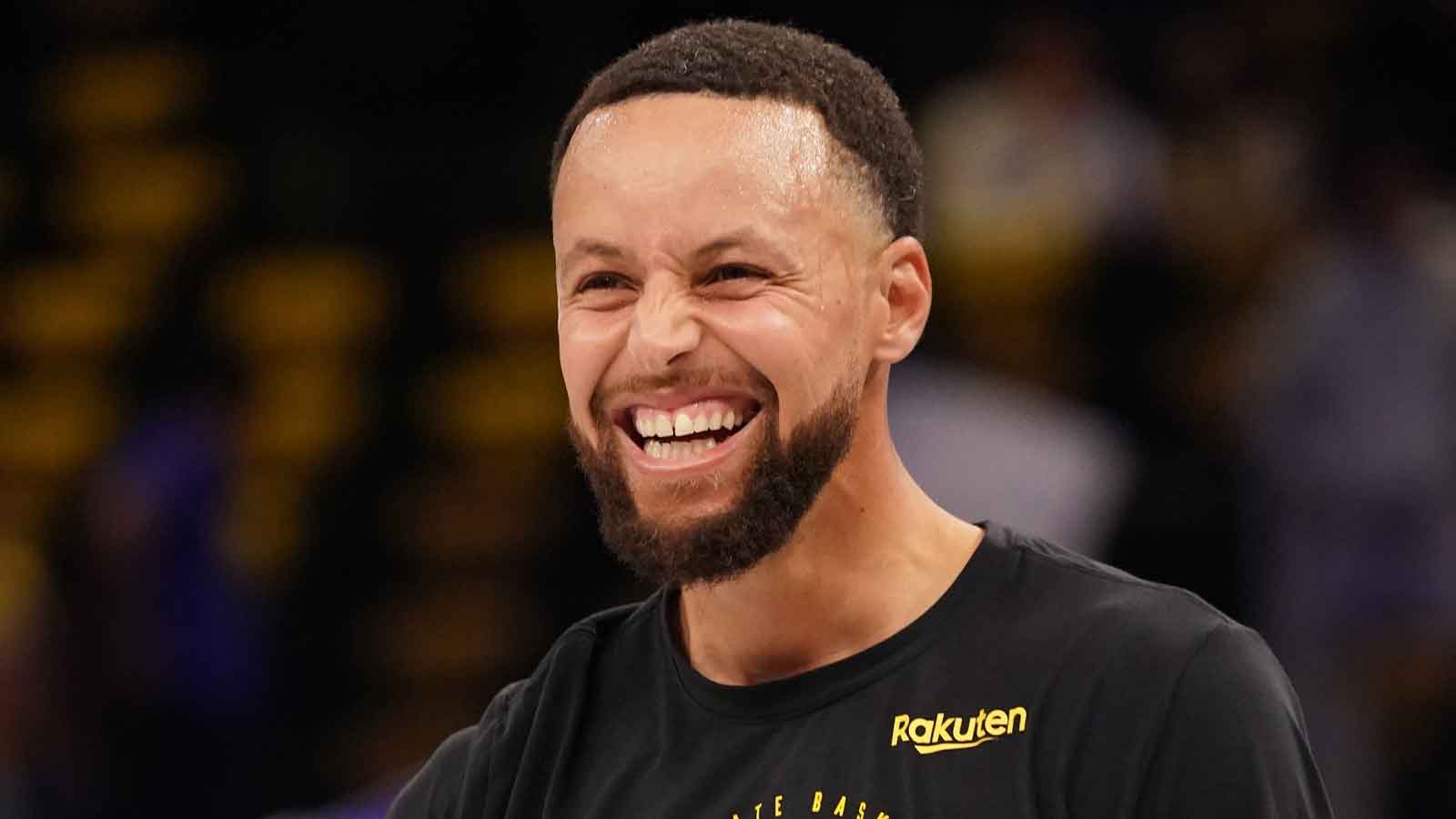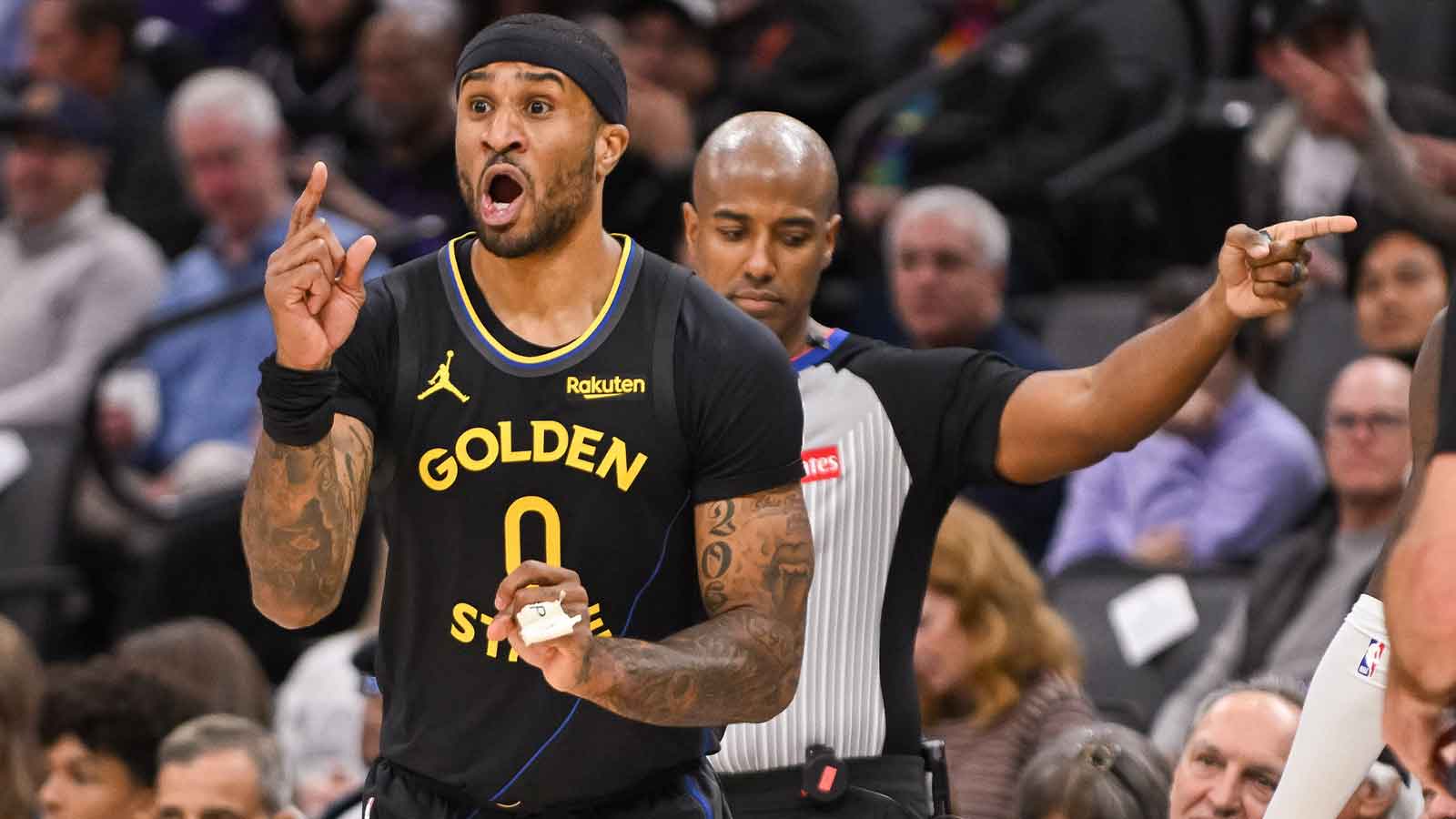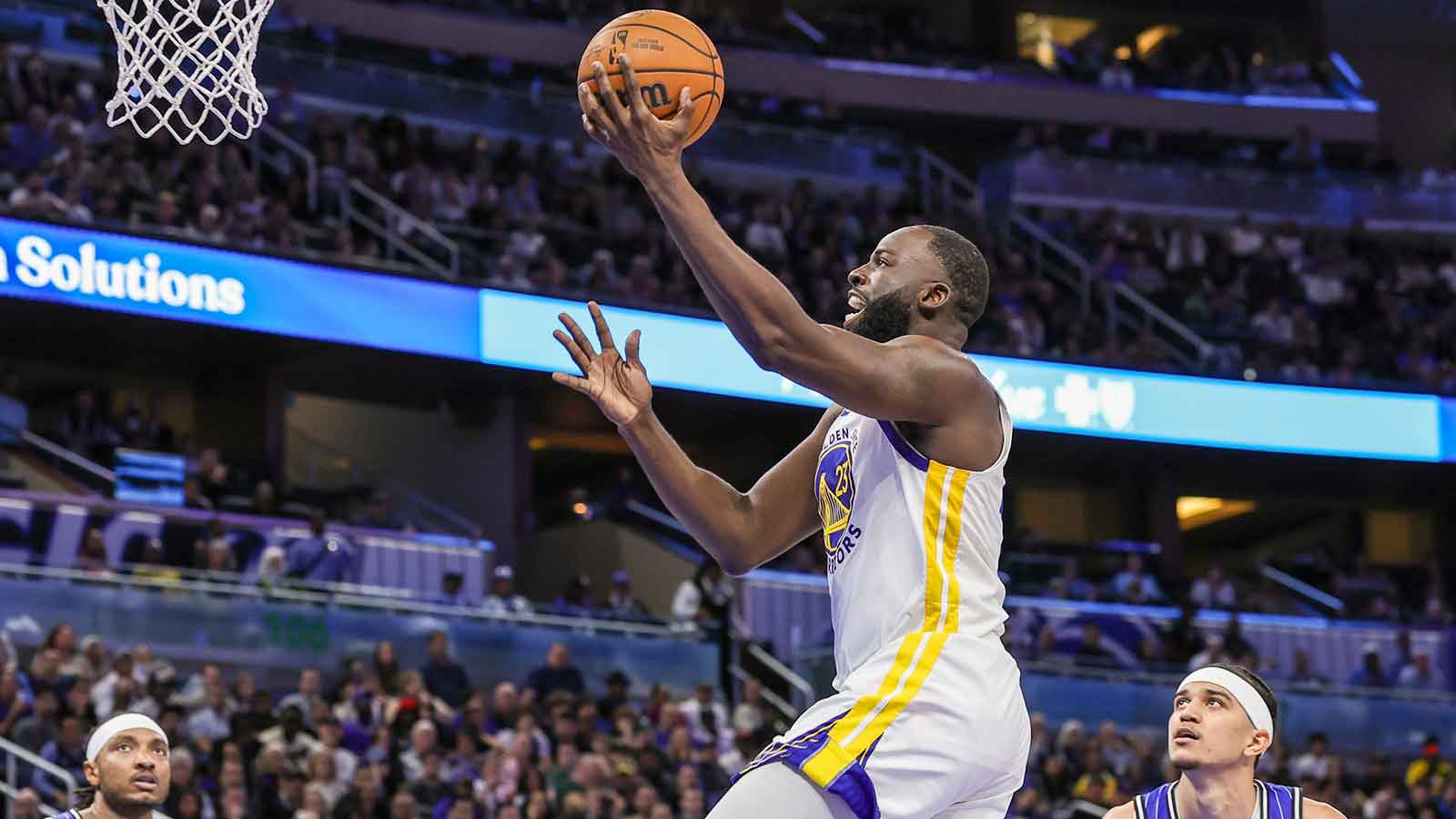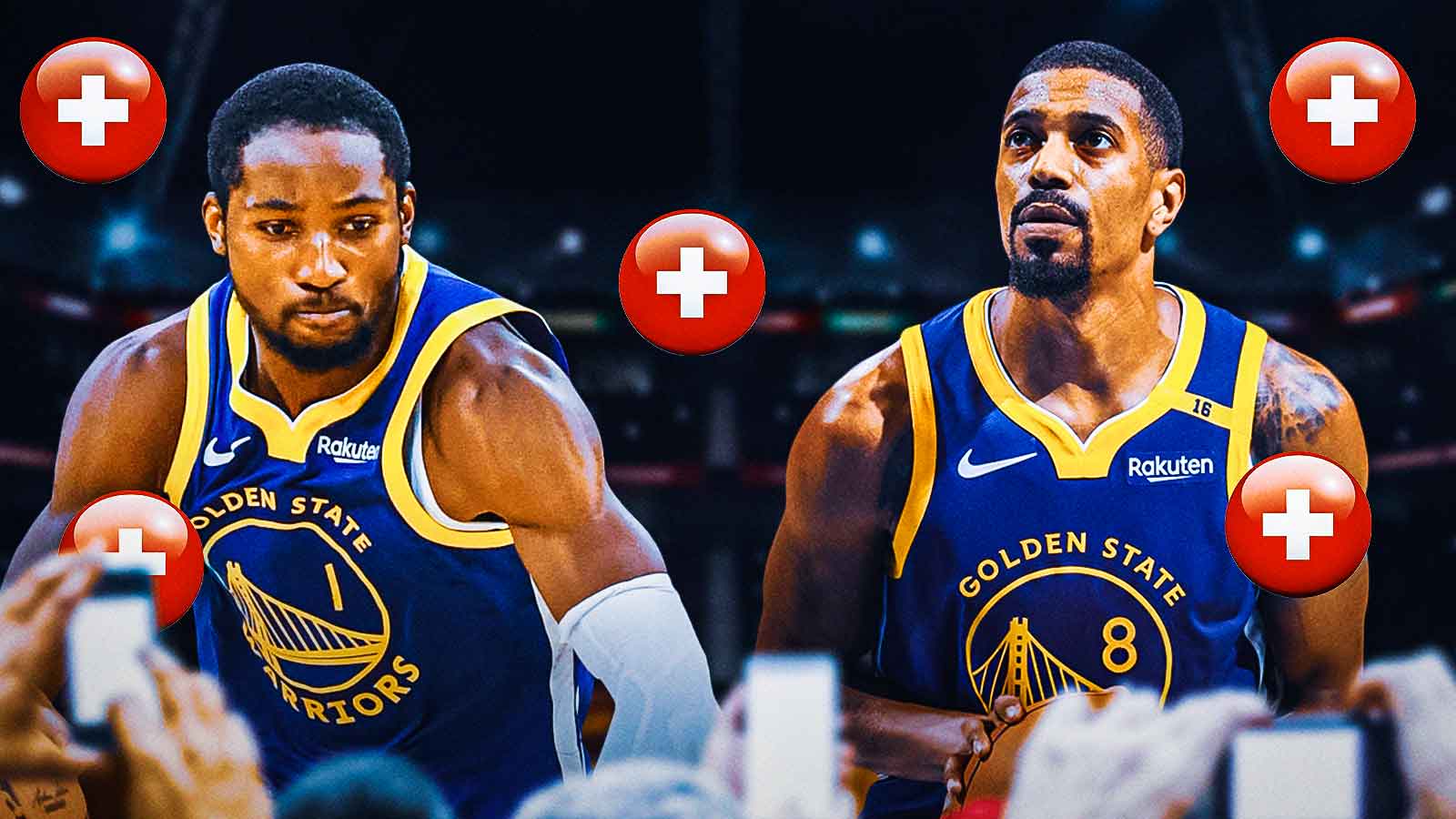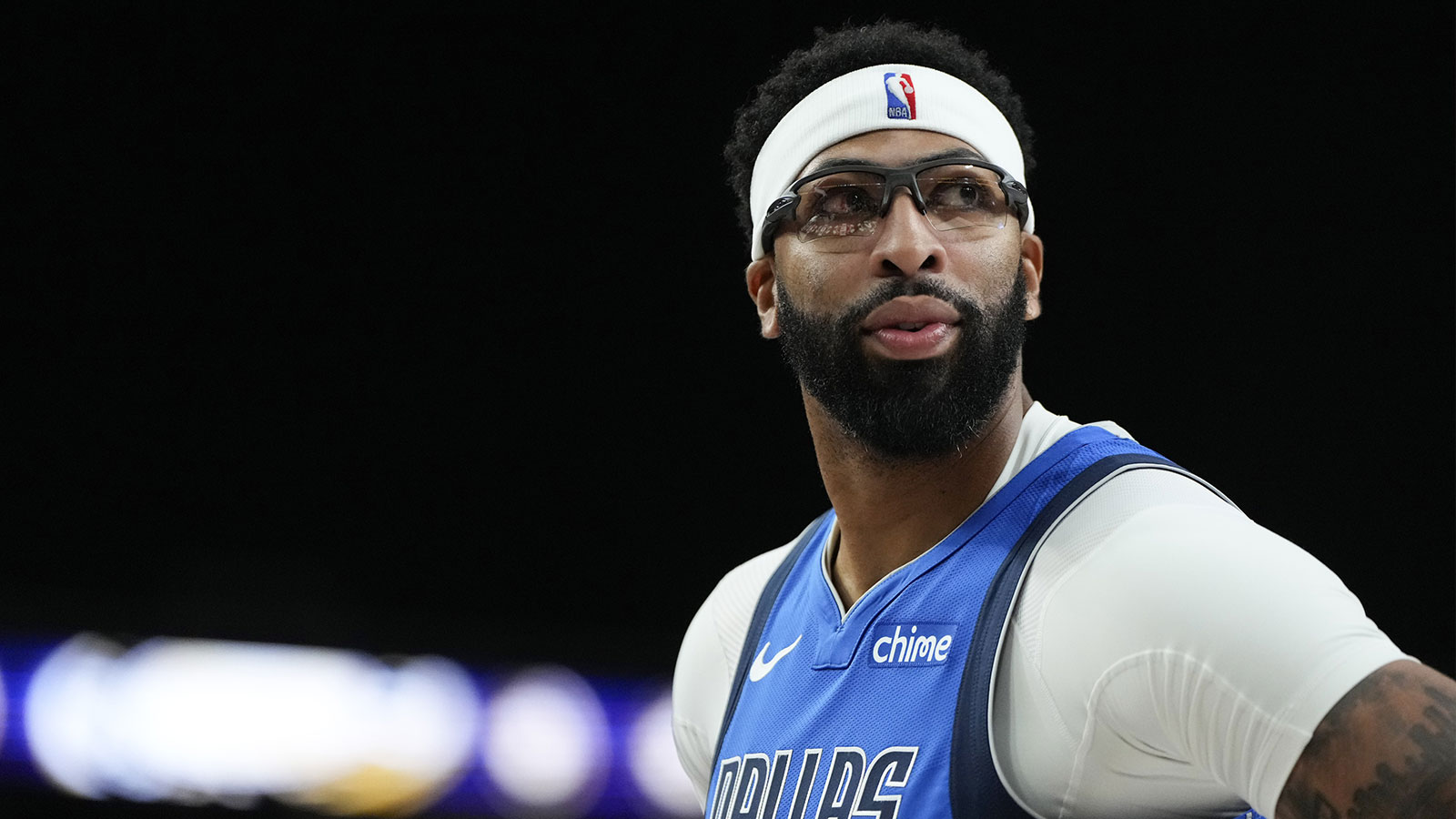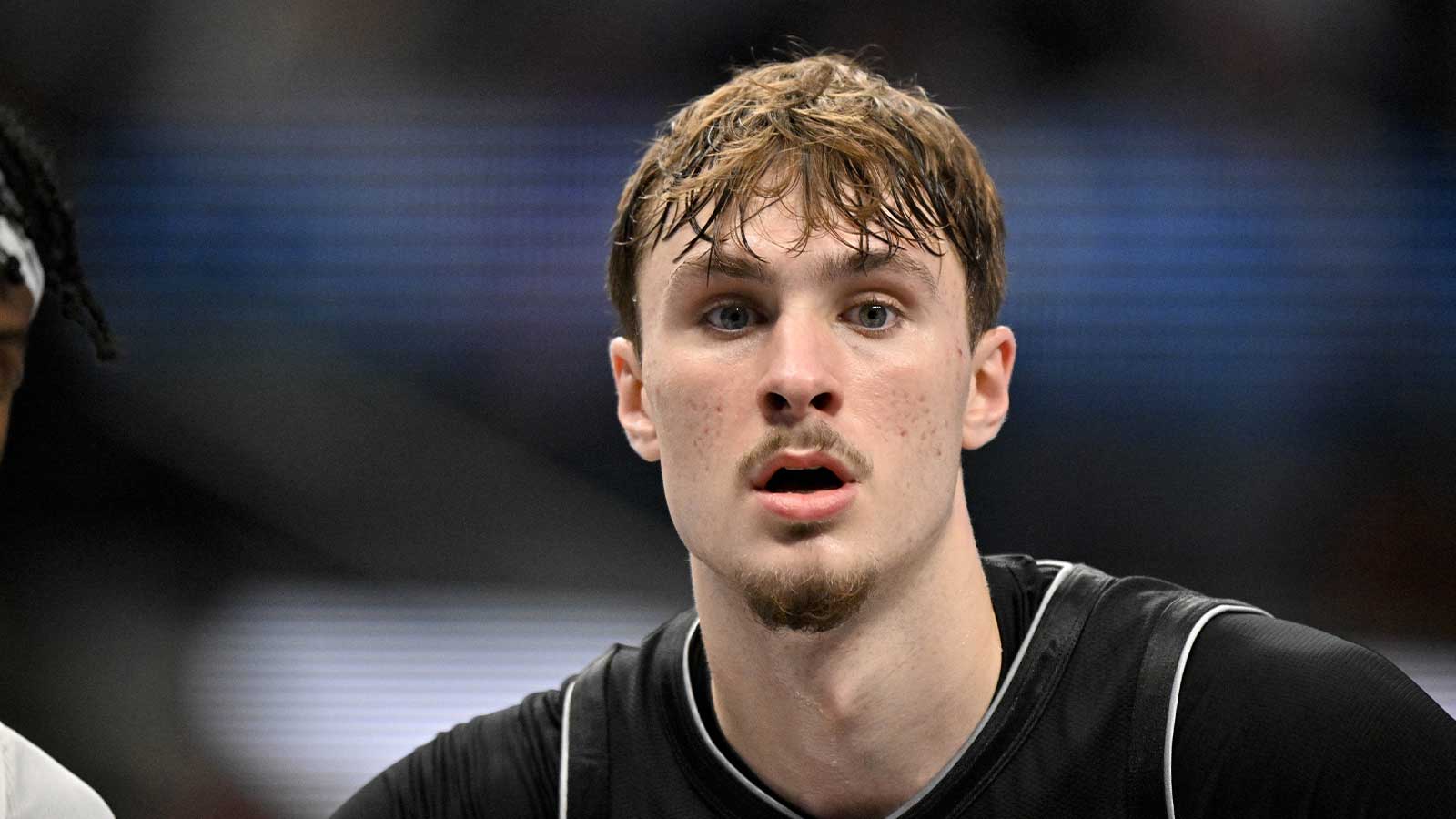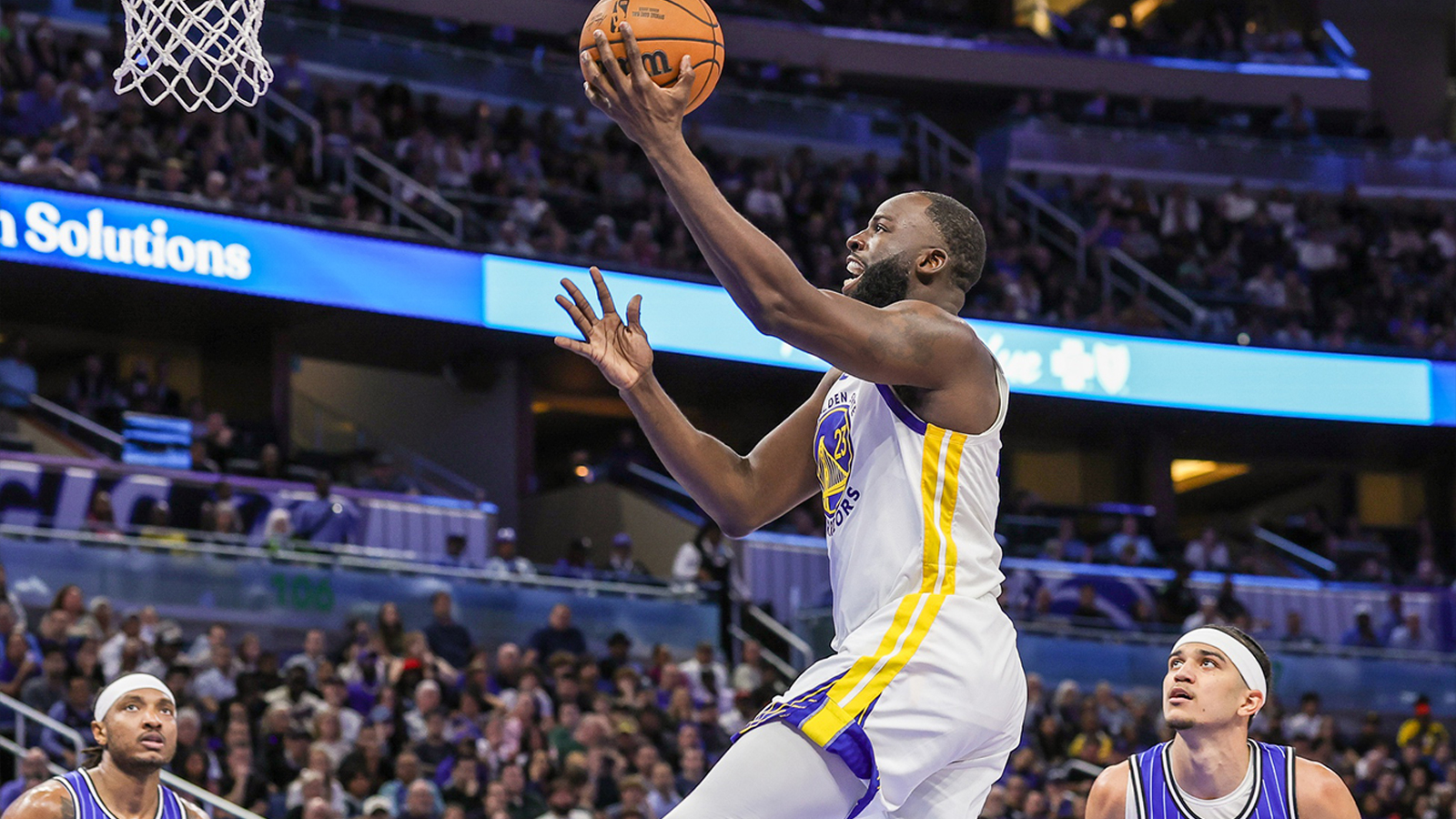As much changed for the Golden State Warriors' roster and front office over the offseason, the fabric of this team's identity remains pretty much the same as when it was celebrating a fourth championship in eight years less than 16 months ago. Stephen Curry is still the Dubs' singular offensive engine, Draymond Green still sets their defensive and cultural tone and Steve Kerr's longtime starting five still has an argument as basketball's best.
That sense of stasis shouldn't spark real optimism given the manner of Golden State's failed title defense last season. Almost nothing went right for the Warriors in 2022-23, and not just because Green punched Jordan Poole in the face during an early October practice. They couldn't win a road game, struggled to score in the clutch and never found a lasting rotation, deficiencies that reared their head almost as much in the playoffs as a relentlessly tumultuous regular season.
But 2023-24 looms on the Bay Area horizon with hopeful confidence regardless. In an absolutely loaded Western Conference, no one would be totally shocked if Golden State was the last team standing come June. Curry, Green and Klay Thompson definitely won't get the chance to play for a fifth championship, though, unless their revamped supporting cast allows the Dubs' collective whole to be greater than the sum of its individual parts.
Keeping that reality in mind, here are three burning questions facing the Warriors as 2023-24 training camp tips off next week.
3. Is the frontcourt deep enough?
The unsolvable offensive problems Golden State faces against good defenses when Green and Kevon Looney play together were laid bare by Anthony Davis, LeBron James and the Los Angels Lakers in the Western Conference Semifinals. Regardless, the Warriors were never going to seek a clear-cut shooting and finishing upgrade on the interior. Almost a decade into the dynasty, it's still clear they're at their best with Green playing small-ball five.
But Golden State isn't anywhere near the juggernaut it was when Kevin Durant was in town. The Warriors barely avoided the play-in tournament last season, and will want as many playoff games at Chase Center as possible if they skirt above it once again. Reliable depth up front looms large across the 82-game grind, too. There are also certain postseason matchups that could call for two-big lineups that don't include Looney.
Free agent addition Dario Saric is a perfect fit for Kerr's system offensively, a high-level playmaker and solid screener who hit 39.1% from deep last season. He's not a traditional rim-protector and can't switch onto guards or wings, but Saric is smart and physical enough defensively to not be a liability in the team concept—especially playing next to Green or Looney, valuable positional versatility his offensive talents permit.
Green and Looney were worn out last season, and Saric isn't too far removed from tearing his ACL. Where will Golden State go if one of them gets injured?
The likely answer is more minutes for Andrew Wiggins as a de facto power forward and an expanded role for Jonathan Kuminga, but don't completely count out rookie second-rounder Trayce Jackson-Davis, either. He's the Dubs' best pick-and-roll lob threat—key with Chris Paul in the fold—and has advanced understanding as a passer and defender, the type of learned “feel” gleaned from playing four years at Indiana. Jackson-Davis is undersized for a five, though, and doesn't stretch the floor. It'd be less than ideal for Golden State if he was pressed into regular action at any point this season.
As long as Saric proves a playable third big and the injury bug doesn't bite, the Warriors' frontcourt depth shouldn't be an issue. Kerr's affinity for small-ball and their abundance of rotation wings assures as much. But we could be singing a much different tune if Green, Looney or Saric is lost to injury, especially in the postseason against big teams like the defending-champion Denver Nuggets, Lakers and Memphis Grizzlies.
2. How much does Chris Paul have left?
The many reasons why Paul should come off the bench for Golden State are obvious, and Kerr is already preaching that it doesn't really matter who's on the floor for tipoff. Poole started 43 games a year ago while filling in for an injured Curry and spending a month as a regular member of the Dubs' downsized opening five. Paul will probably slide into a similar amount of starts even while serving as a primary reserve for the first time in his 18-year career.
“We basically have six starters the way I look at it,” Kerr said on Monday. “Only five can go each night, so I haven't decided yet what we're gonna do. I wanna see training camp. We're gonna try different combinations and take a look. Obviously all six guys are gonna play a lot of minutes for us. If this is gonna work, everybody has to embrace it, regardless of who is starting and who's not. It only works if the whole team buys in.”
The Warriors definitely won't re-emerge as a top-tier contender this season unless they're all rowing the same direction. But even perfect cohesion and connectivity won't be enough for them to win another championship unless Paul, 38, keeps Father Time from getting any closer.
Paul shot 49.2% on pull-up twos last season, per NBA.com/stats, a great number for mere mortals but comfortably below his awesome late-career accuracy on those difficult attempts. He got all the way to the rim less than ever, too. His career-low 9.6 drives per game is further indication of Paul's declining burst and athletic pop. He remained the highest-usage pick-and-roll ball handler in the league, though, a reliance that will only be viable going forward if Paul reverts back to being one of the three or four most dangerous mid-range shooters in basketball.
Of course, Paul will surely use fewer than 55.9% of his possessions with the Warriors on ball screens regardless. He'll run the show with Curry on the bench, deploying frequent two-man games with Saric and Kuminga, but is bound to take more spot-up threes in 2023-24 than at any point of his career. Paul hit a scorching 52.3% of his catch-and-shoot triples during the regular season last year, but just 31.3% in the playoffs on higher volume—evidence of his slow, deliberate release, discomfort launching from several feet beyond the arc and defenders being unafraid to close-out hard on him.
Paul doesn't need to play at an All-Star level to thrive with the Warriors. His leadership, basketball IQ and table-setting prowess will be welcome additions for a backcourt that sorely lacked those attributes without Curry on the floor last season. But if his jumper betrays him and teams start targeting him defensively, it's more likely than not that Paul fails to be the difference-maker Golden State needs, prompting the Point God to be traded again before the February 8th deadline.
1. Are Jonathan Kuminga and Moses Moody ready to take the leap?
You'll hear a version of the same tired cliché from the Warriors throughout 2023-24: “What matters isn't who starts, but who finishes.” Paul will be the subject of that coach speak far more than anyone else as Kerr massages the ego of one of the most head-strong stars in league history.
But Golden State's highest possible peak this season won't be reached by Paul rising off the bench to play nightly member of the crunch-time five alongside Curry, Thompson, Wiggins and Green. It's Kuminga and Moses Moody coming into their own as third-year pros who account for that utmost potential, superior size and athleticism making them far better one-on-one defenders than Paul in the clutch.
Remember how James mercilessly attacked both Curry and Poole in ball-screen action during the second round of the playoffs? The Dubs could be subject to a similarly slow death if their best closing lineup slots another small guard next to Curry, Paul's basketball and competitive fire genius be damned.
All the intelligence and guile in the world won't help Paul stop the likes of James, Luka Doncic, Shai Gilgeous-Alexander, Ja Morant and other superstar ball handlers if they consistently put him in pick-and-roll crosshairs late. Kuminga and Moody aren't nearly as exploitable in isolation, but that won't matter unless they make enough strides elsewhere for Kerr to put them on the floor as games hang in the balance.
It's clear what that means for Kuminga: Committing to crashing the defensive glass, improving as a 4-on-3 decision-maker and continuing to smooth out his long-range jumper. He needs to tighten up as a help defender and run harder in transition, too. Moody's necessary growth is simpler, rooted in better on-ball defender and more aggression letting fly from beyond the arc. He started doing the little things toward the end of last season, nuanced development reflected in his surprisingly large postseason role after riding the bench over the 82-game grind.
Kuminga and Moody will both be 21 this season, at least a half-decade away from their playing primes. But youth becomes a less defensible excuse for third-year players, especially when the core and system of their incumbent team goes largely unchanged. No one is asking Kuminga and Moody to play like stars, or even regularly flash that long-term ceiling. Impacting winning within the team construct is all they need to do to finally gain Kerr's lasting trust.
Would that mean Kuminga or Moody emerge as a crunch-time mainstay? No way. But just the stylistic flexibility and personnel optionality provided by that progress would be massive for Golden State—enough to turn the Warriors from nostalgic championship hopefuls to legitimate title favorites alongside the Nuggets, Milwaukee Bucks, Boston Celtics and Phoenix Suns.

